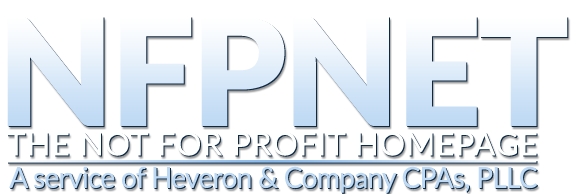Tag Archive for: form 990
New IRS Search Engine for Eligible Charities
A client board member recently asked why their nonprofit could not be found in Publication 78. Publication 78 was the official listing of charities eligible to receive contributions, and it started out as a hard copy document that made its way to PDF, but times have changed and IRS is now maintaining its entire database electronically.
The Revenue Procedure that announced the new databases confirms what purposes they can be used for.
The new IRS tool called Tax-Exempt Organization Search or TEOS is the next generation of IRS Exempt Organization Select Check, and in addition to checking on the organization’s exempt status, you will be able to look at images of forms 990, 990-EZ, 990-PF, and 990-T starting with the 990 forms filed in 2018.
IRS favorable determination letters will start to become available on this site. Eventually determination letters issued since January 2014 will be available.
IRS claims that the new search tool is easier to use, is more user-friendly, and easier to search on smart phones and tablets.
Like the predecessor tool, you will also be able to look at organizations that have had their exempt status revoked for failure to file, and look for organizations that have filed form 990N.
Nonprofits Check Your Website … IRS Will
It wasn’t that many years ago that IRS seemed confused about what to do about nonprofit websites. Could links to for-profits be Unrelated Business Income? Can charities lobby or carry on political activity with links or messages on their website?
Now IRS considers your website and your social media postings a tool to check your activity and your compliance.
They will check these if your organization has been selected for audit. They will also check these for organizations that are applying for exempt status, or for a change in their status.
It’s very likely they will look at these if they are considering an audit of your organization based on inconsistencies identified in your form 990, or based on referrals from other agencies or from individuals.
The message is clear. Be sure your website and social media is up to date and properly describes your activities, and that those activities are consistent with your mission. Also be careful of any links or endorsements that might indicate Unrelated Business Income, political or lobbying activity.
It wasn’t that many years ago that IRS seemed confused about what to do about nonprofit websites. Could links to for-profits be Unrelated Business Income? Can charities lobby or carry on political activity with links or messages on their website?
Now IRS considers your website and your social media postings a tool to check your activity and your compliance.
They will check these if your organization has been selected for audit. They will also check these for organizations that are applying for exempt status, or for a change in their status.
It’s very likely they will look at these if they are considering an audit of your organization based on inconsistencies identified in your form 990, or based on referrals from other agencies or from individuals.
The message is clear. Be sure your website and social media is up to date and properly describes your activities, and that those activities are consistent with your mission. Also be careful of any links or endorsements that might indicate Unrelated Business Income, political or lobbying activity.
